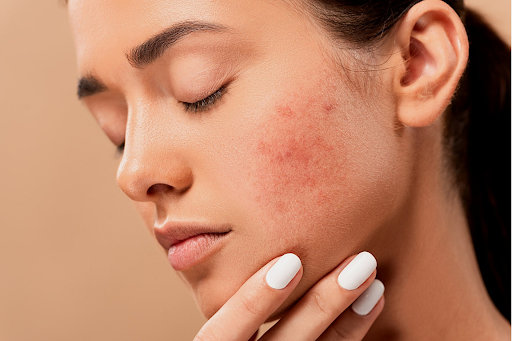Hyperpigmentation occurs when the skin produces extra melanin, the pigment that gives skin its color. So, blotches or patches of skin may appear darker than the surrounding areas as a result. Skin hyperpigmentation is a common skin condition. It affects people of various ethnicities and skin tones. Those with melasma and sunspots, for example, are more prone to appear on the face, arms, and legs. Cuts, burns, acne, and lupus can cause hyperpigmentation. This can occur at any point on the body, including the head. Extra pigmentation in some regions of the skin is typically innocuous, although it might occasionally signal another medical issue.
Taking care of one’s skin has become a chore in recent years. This is largely due to the constant exposure to the sun and pollution, which has resulted in a slew of skin issues. There is no end to the sorts of skin issues that are emerging these days, from skin tanning to persistent pigmentation patches. Pigmentation is the formation of black patches on the skin, which causes it to seem dull and irregular. To know more about hyperpigmentation, you can check out an informational blog by clicking here https://opte.com/pages/hyperpigmentation-101 and know all the basic things like what are the causes of hyperpigmentation, its types, and the best skincare ingredients.
To get rid of those pesky pigmentation patches, we frequently use BB creams, concealers, and a variety of other artificial products. As a result, while treating such skin diseases, it is always preferable to use natural methods. We’ve compiled a list of natural home treatments to help you get rid of those pesky pigmentation patches. Continue reading to learn more about them.
1. Yogurt
Yogurt contains lactic acid, which aids in the removal of dead skin from skin. One spoonful of fresh yogurt would be sufficient to reduce the pigmentation patches. Apply the yogurt to the afflicted regions and allow it to sit for 20 minutes. Using some water, wash your face.
2. Papaya
The exfoliating effects of papaya are great. By treating hyperpigmentation, aids in the removal of dead skin cells and encourage the development of new ones. You’ll need 3 tablespoons of papaya extract, milk, and organic honey to prepare a papaya face-pack for yourself. Combine these items in a bowl. Mix all together until it’s completely smooth. Apply it all over the face and leave it on for approximately 20 minutes. Rinse well with cold water.
3. Sandalwood
As a skin lightener, sandalwood is a fantastic addition to your skincare regimen. Sandalwood and rose water are needed to make sandalwood paste for your skin. Combine these two items in a bowl. On your face, apply the paste evenly and leave it for at least 20 minutes. In the end, rinse with lukewarm water and pat dry.
4. Potatoes
The anti-pigmentation effects of potatoes are well recognized. They are well-known for their effectiveness on pigmented regions and blemishes. You’ll need 1 raw potato and some water. Cut the potato in half and immerse the cut half in water. For around 10 minutes, rub the potato slice in a circular manner on the afflicted regions. Cleanse your face with lukewarm water. For best results, repeat this treatment twice or three times each week.
5. Coconut oil
Coconut oil helps to replace dead skin cells while also protecting them from the sun’s damaging UV radiation. To begin, cleanse your face to eliminate any extra grime. Apply the coconut oil to your face and massage it in well so that it goes deep into the layers of your skin. After you’ve finished massaging, keep the oil to the skin for at least 25 minutes to absorb any excess oil. Wash your face and continue this process three times a week.
Bonus
Lemon is the most promising component of all, as it is a skin powerhouse. It not only has anti-inflammatory qualities, but it also has a lot of vitamin C, which is wonderful for eliminating dark spots and decreasing pigmentation. One thing to keep in mind is that because lemon juice contains a high concentration of citric acid, it should not be applied straight to your skin. Always combine it with other substances, such as a spoonful of yogurt or a tablespoon of cucumber juice, and let it on your face for 10 minutes to work its magic.
Conclusion
Moreover, to save you time and energy, above are the list of five substances that you may find in your kitchen that will help relieve discomfort and combat pigmentation permanently. Make sure to include these basic yet highly powerful items the next time you make a DIY face mask.











